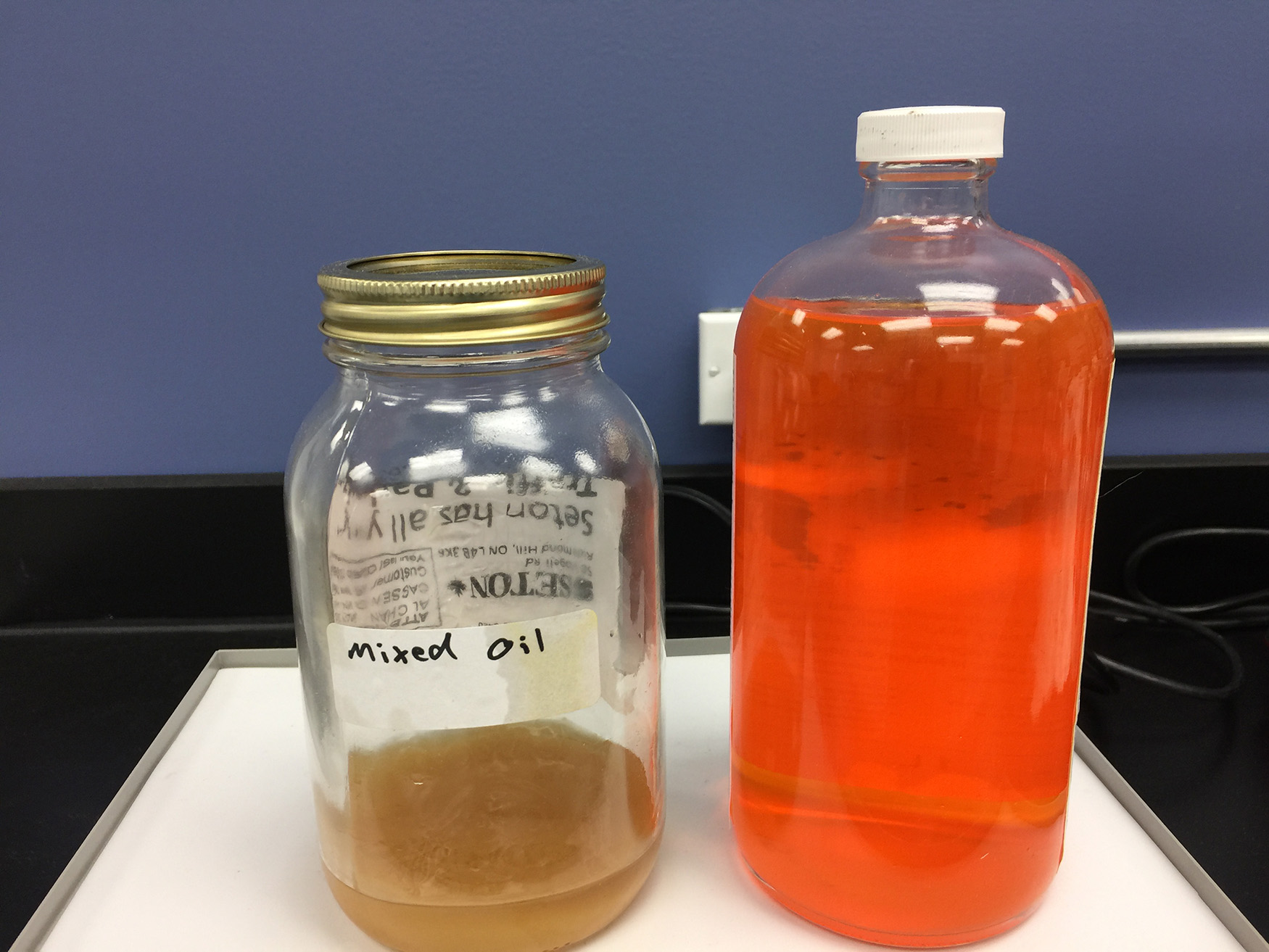Determination of Occupational Exposure Limits for Certain Refined Hydrocarbon Solvent Vapour Mixtures

CASSEN provides analytical testing using gas chromatography/mass spectrometry for the determination of occupation exposure limits in petroleum mixed solvent. This analysis includes:
- Determination of 8 hydrocarbon group guidance values as per Table 1
- Determine the specific target hydrocarbons that possess low OELs
- Calculation of hydrocarbon group guidance value for the mixture (GGVmix)
Background
Starting in 2009, ACGIH TLV’s for VM&P naphtha and rubber solvent has been removed and replaced with Appendix H: Reciprocal Calculation Procedures (RCP) for Certain Refined Hydrocarbon Solvent Vapours, which outlines the method to calculate TLV of the mixture composing of multiple chemicals which can cause simultaneous exposures. Ministry of Labour states that an employer has a duty and shall take all measures reasonably necessary in the circumstances to protect workers from exposure and recommends that OELs for certain Refined Hydrocarbon Solvent Vapour Mixtures, including Petroleum ether, Rubber solvent and VM&P Naphtha that are not included in the Ontario Table or the ACGIH Table be calculated using this method.
The RCP intended for calculating OELs for mixtures containing saturated aliphatic (normal, iso-alkanes and cycloalkanes), and aromatic hydrocarbons consisting of C5 to C15 carbon atoms and having boiling points in the range of approximately 35° – 320° C. It does not apply to petroleum derived fuels, lubricating oils or solvent mixtures that already have an OEL. It also does not apply to hydrocarbons with toxicity significantly higher than the mixture at large such as benzene, n-hexane, and methylnaphthalene. Such components of the mixture should be measured and considered individually. The use of the RCP should be restricted to applications where the boiling points of the solvents in the mixture are relatively narrow, within a range of less than 45° C (i.e., vapour pressure within approximately one order of magnitude).
Where the mixture is comprised entirely of compounds with unique TLVs, the mixture should be handled according to Appendix E. When the mixture contains an appreciable amount of a component for which there is a TLV, those specific values should be entered into the RCP (see column D, Table 1). When the mixture itself has been assigned a unique TLV, that value should be utilized rather than the procedures found in this appendix.
Reciprocal Calculation Procedure (RCP)
This calculation method known as the reciprocal calculation mixture formula is based on:
- The mass composition of the mixture
- Hydrocarbon group guidance values (GGVs)
- Substance-specific OELs, where applicable
The hydrocarbon GGVs are categorized based on similar chemical and toxicological properties. The GGVs to be used for the calculation of the OEL of the hydrocarbon mixture are given in Table 1.
Using the reciprocal calculation mixture formula given below, the calculated GGVmixture becomes the 8-hour TWA-OEL for the refined hydrocarbon mixture.
The reciprocal calculation mixture formula:
Where:
GGVmix = the calculated 8-hour TWA–OEL for the mixture
GGVa = the guidance value (or TLV®) for group (or component) a
Fa = the liquid mass fraction of group (or component) a in the hydrocarbon mixture (value between 0-1)
GGV, = the guidance value (or TLV®) for the nth group (or component)
Fn = the liquid mass fraction of the nth group (or component) in the hydrocarbon mixture (value between 0-1)
GGV n = the guidance value (or OEL) for the nth group (or component)
Note:
- The Group Guidance Values for the respective hydrocarbon groups are given in Table 1; theOELs for specific components are prescribed under Regulation 833.
Rounding Rule: GGVmixture should follow recommended rounding techniques. For calculated values <100mg/m³, round to the nearest 25. For calculated values between 100 and 600 mg/m³, round to the nearest 50. For calculated values > 600 mg/m³, round to the nearest 200 mg/m³.
Limitations
- The RCP does not apply to solvents that contain agents such as benzene or n-hexane, or methylnaphthalene. These solvents have individual exposure limits that are significantly less than the GGV to which they would belong and have unique toxicological effects.
- The RCP applies only to vapours and does not apply to mists or aerosols.
- The calculation does not apply to mixtures containing olefins (alkenes) or other unsaturated compounds or polycyclic aromatic hydrocarbons (PAHs).
- Fa and F n of the reciprocal calculation mixture formula requires that the mixture be characterized at least to the detail of mass percent of the groups given in Table 1.
TABLE 1. Group Guidance Values
| A Hydrocarbon Group | B** McKee et al. (mg/m3) | C UK-HSE 40/2000 (mg/m3) | D ACGIH® Unique TLVs® (mg/m3) |
|---|---|---|---|
| C5 - C6 Alkanes | 1500 | 1800 | Pentane, all isomers (1770) Hexane isomers (1760) |
| C7 - C8 Alkanes | 1500 | 1200 | Heptane, all isomers (1640) Octane, all isomers (1401) |
| C5 - C6 Cycloalkanes | 1500 | 1800 | Cyclopentane (1720) Cyclohexane (350) |
| C7 - C8 Cycloalkanes | 1500 | 800 | Methyl cyclohexane (1610) |
| C7 - C8 Aromatics | 200 | 500 | Toluene (75) Xylene, all isomers (434) Ethyl benzene (434) |
| C9 - C15 Alkanes | 1200 | 1200 | Nonane, all isomers (1050) |
| C9 - C15 Cycloalkanes | 1200 | 800 | |
| C9 - C15 Aromatics* | 100 | 500 | Trimethyl benzene, isomers (123) Naphthalene (52), Cumen (246) |
*n-Hexane (TLV-176 mg/m3) and methylnaphthalenes (TLV-3 mg/m3) are significantly below the recommended GGV. Whenever present in the mixture, these components should be measured individually and evaluated using the methodology found in Appendix E, i.e., independent treatment or use of the additive formula depending on the critical effect.
** This value used by Ministry of Labour for calculating Group Guidance Value (GGV)